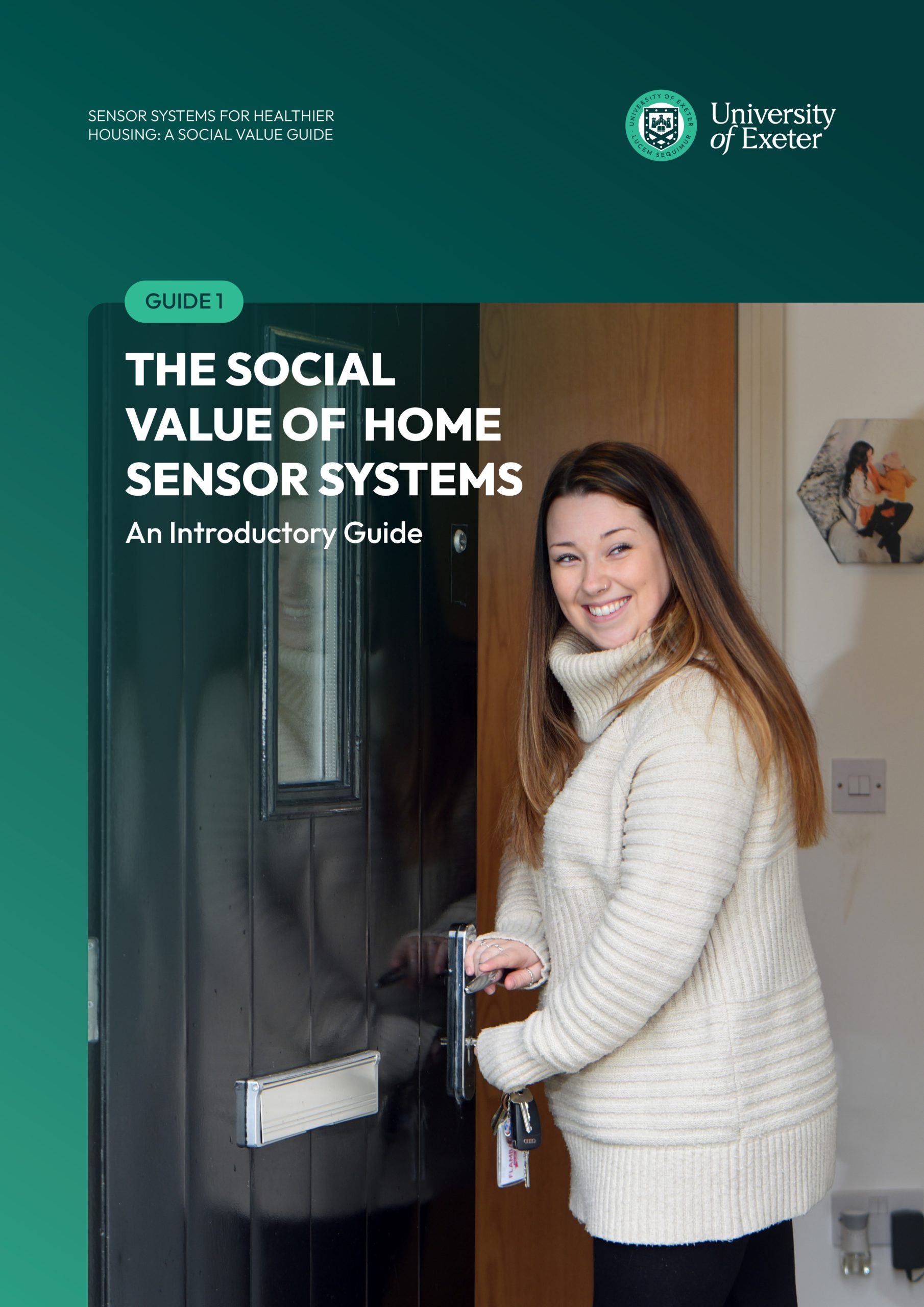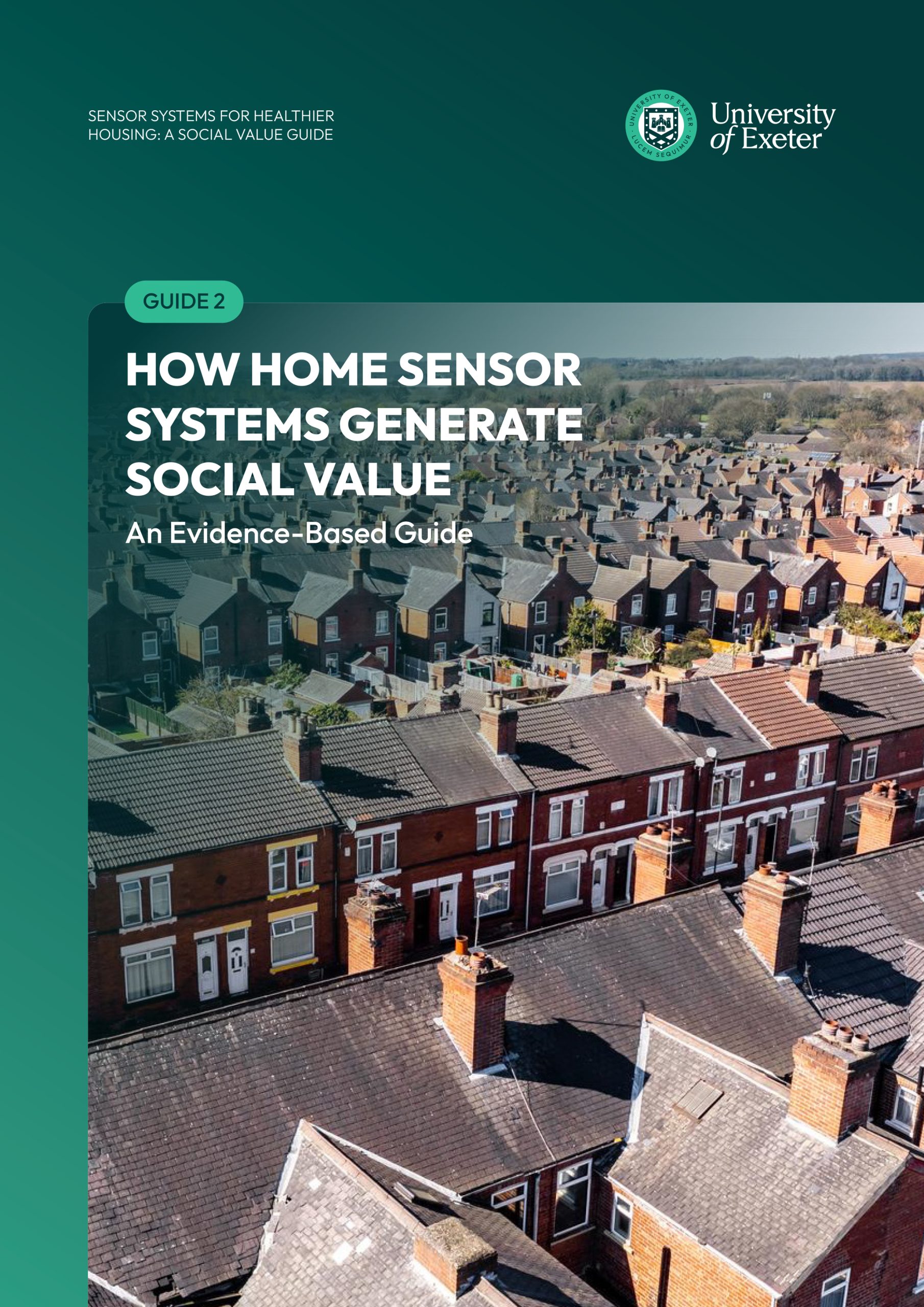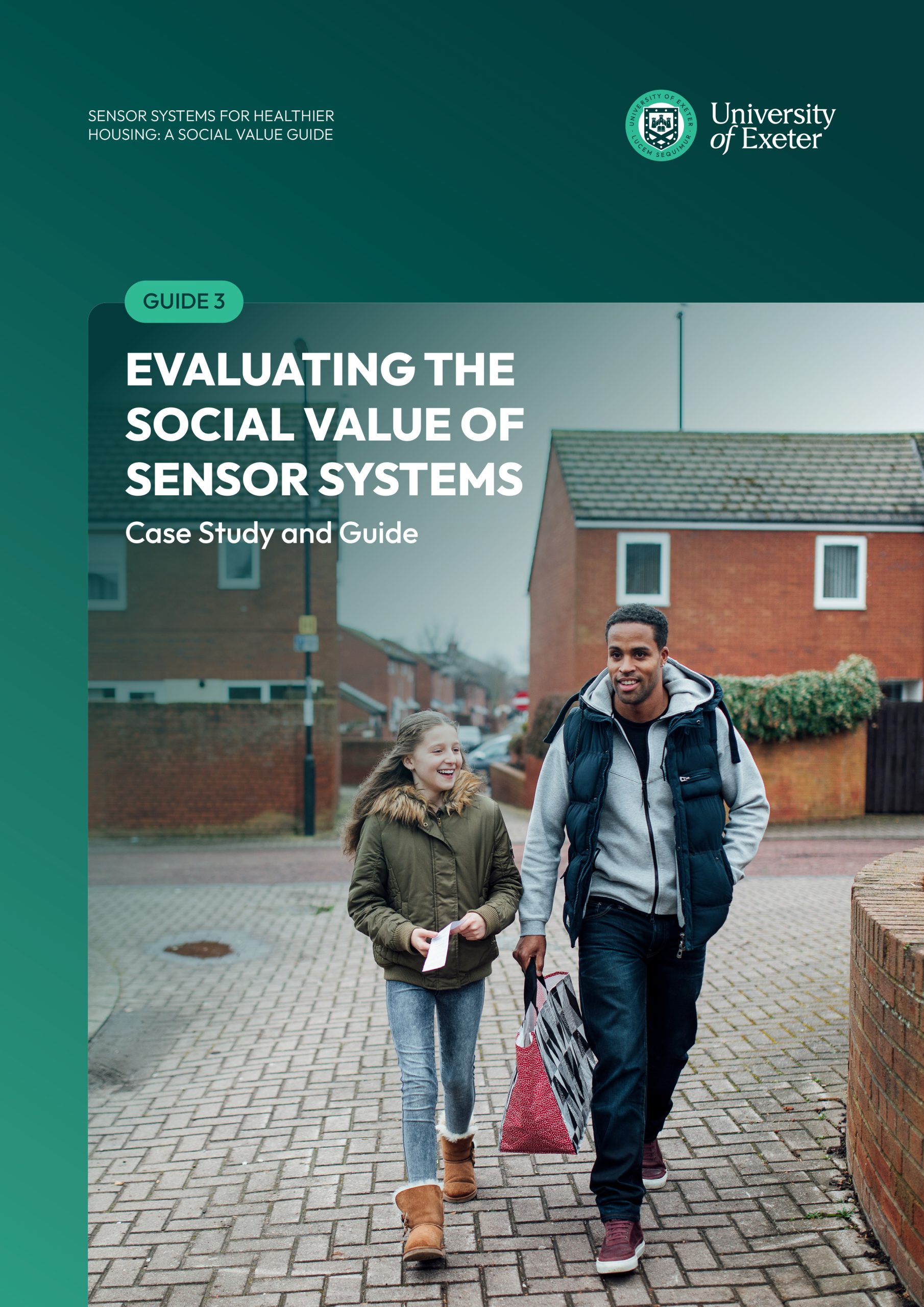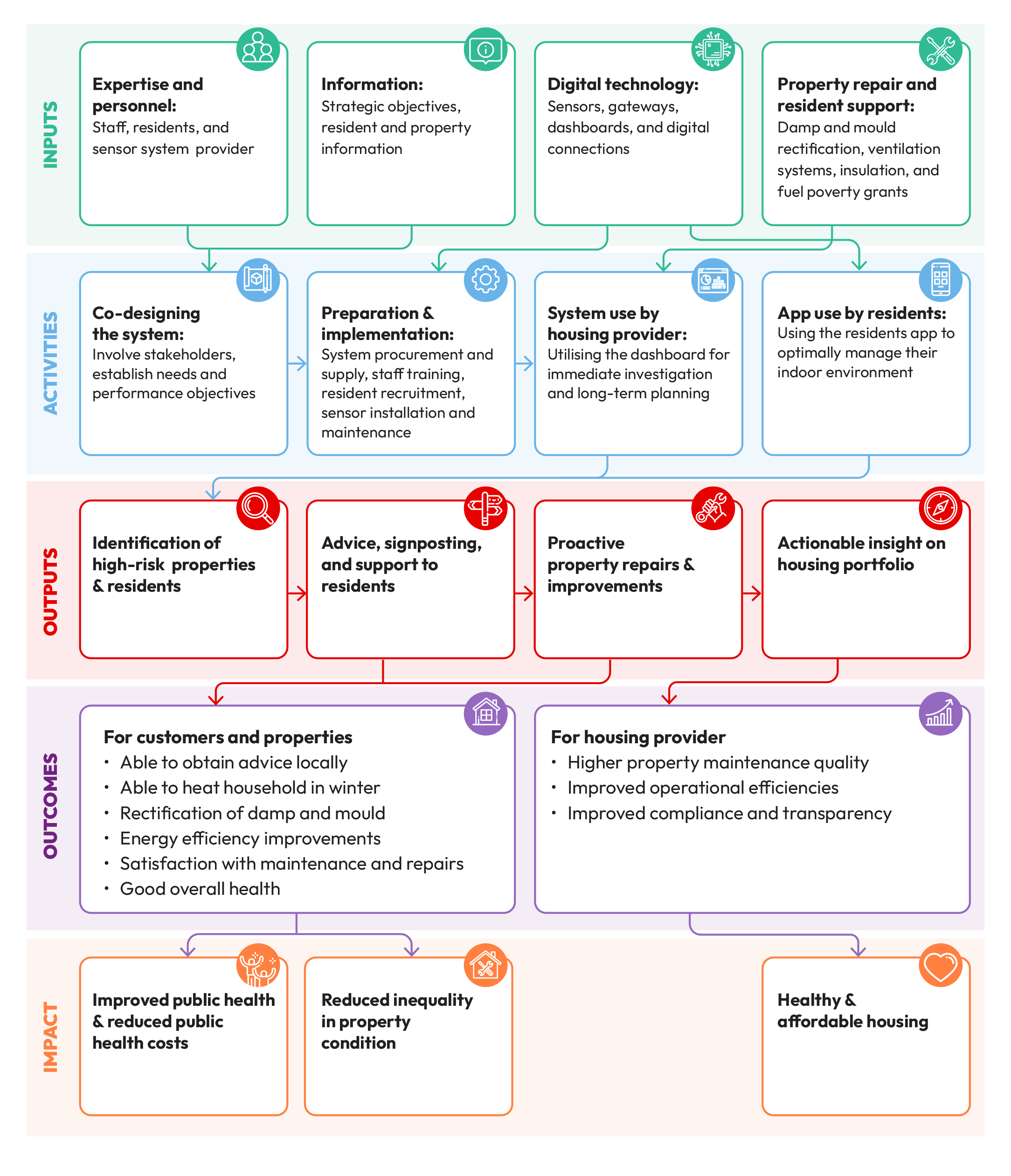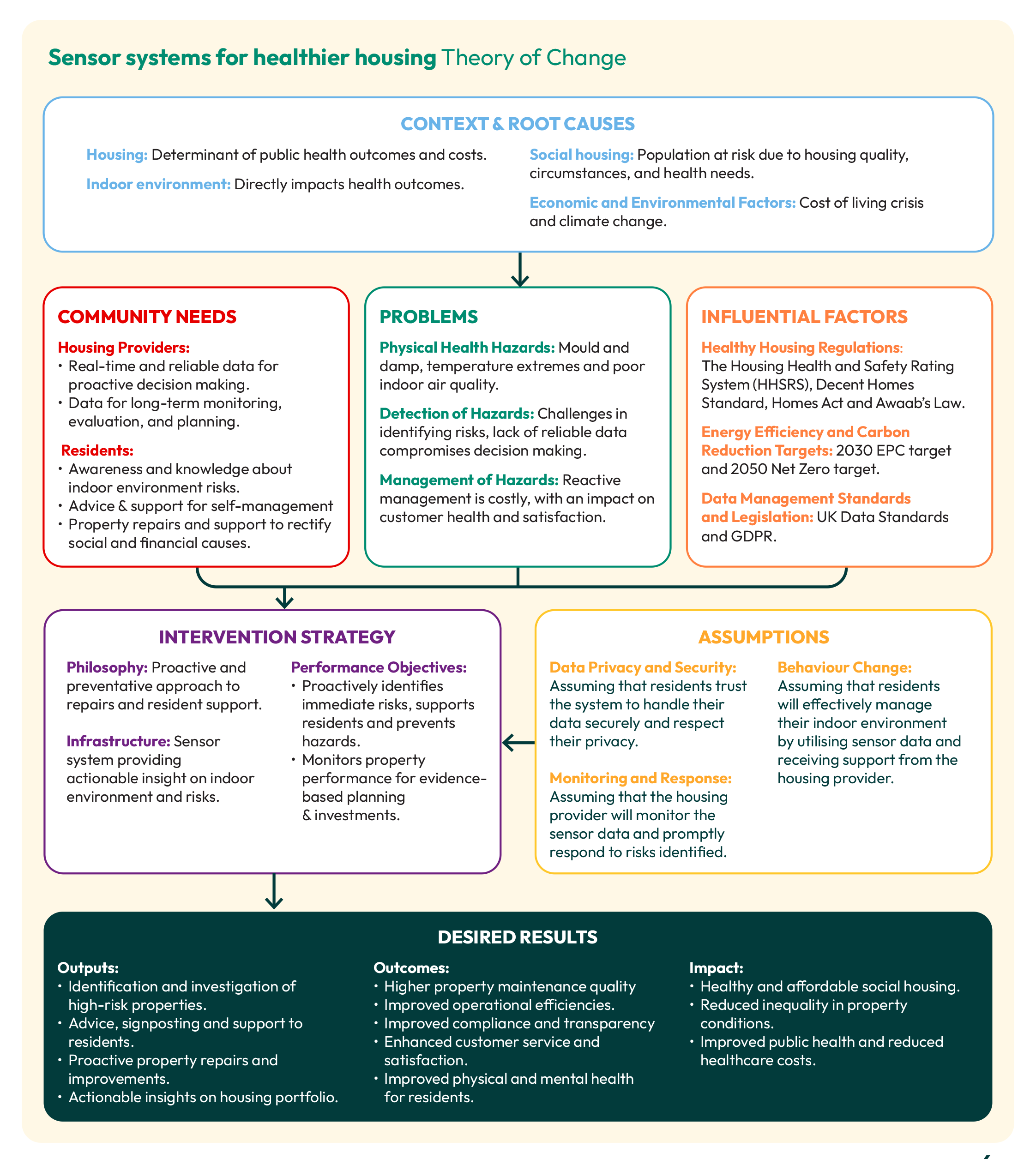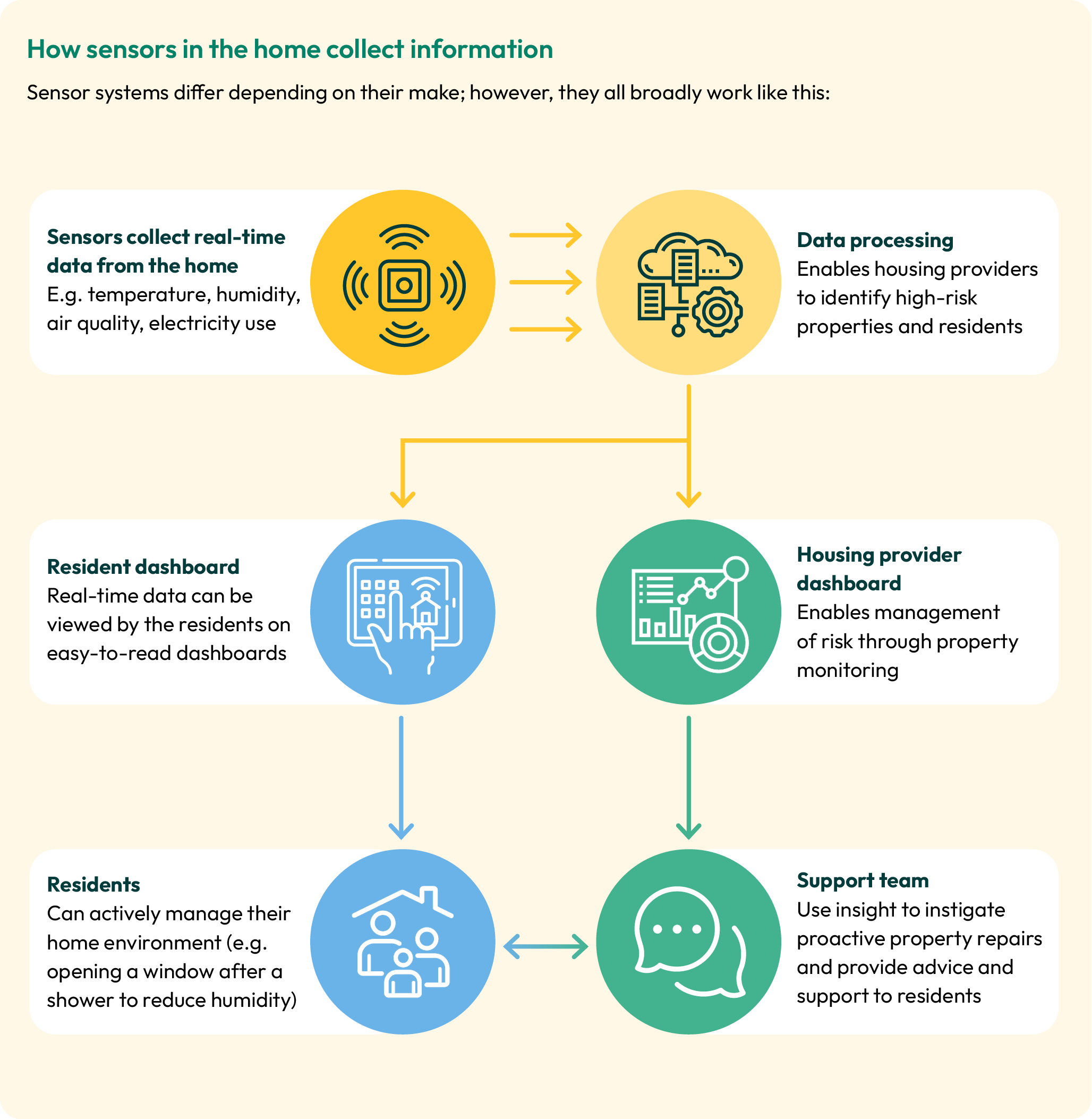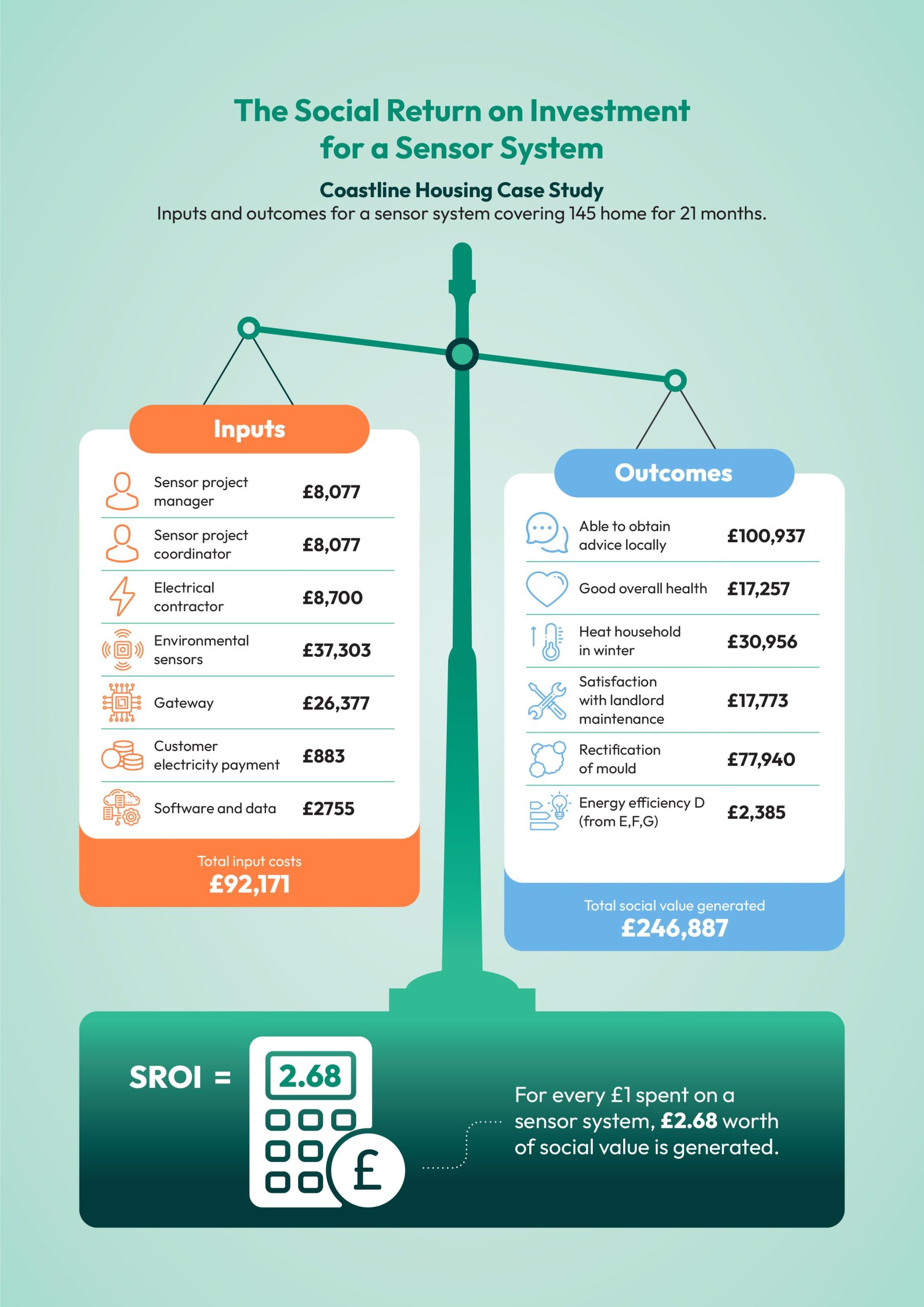Sensor Systems for Healthier Housing: Social Value Guides
Sensor Systems for Healthier Housing: Social Value Guides
Welcome to the landing page for a series of guides on sensor systems and social value. These guides are designed for professionals in the housing sector to help assess the feasibility of adopting a sensor system and to understand the wider social value these systems can generate.
The research underpinning these guides is published in the Housing and Society Journal
Here are the links to download the guides and supporting resources.
Guide 1: The Social Value of Home Sensor Systems: An Introductory Guide
This guide is an introduction to the social value that home sensor systems can generate. We’ll cover how sensor systems can be used to make homes safer and healthier, for example, by being less vulnerable to damp and mould. We’ll also look at how housing providers can collect data to measure the social value generated.
Guide 2: How Home Sensor Systems Generate Social Value: An Evidence-Based Guide.
This guide sets out the underpinning evidence for how sensor systems can generate social value. Based around a Theory of Change, it’s designed to help you plan and evaluate your sensor system project.
Guide 3: Evaluating the Social Value of Sensor Systems: A Case Study and Guide
This guide takes you through the process of evaluating the social value of an indoor environment sensor system. We’ll show how a sensor system has been used in practice by a housing association to improve residents’ homes and health.
This Logic Model outlines the resources and activities essential for implementing a sensor system, alongside the outputs and outcomes. Through illustrating cause-and-effect relationships, it improves understanding of the sensor system’s impact and the generation of social value.
Sensor system Theory of Change
The Theory of Change (ToC) is a clear way of describing the different components of an intervention, how all these components interrelate and why the intervention works. Its holistic overview makes it an extremely helpful way to both plan and evaluate a sensor system project.
This diagram illustrates how a typical sensor system works and who is involved.
Social Return on Investment (SROI) impact card
This impact card provides a one-page summary of a SROI case study for a sensor system. It shows that for every £1 invested there is £2.68 worth of social value generated.
Context: The quality of indoor home environments significantly impacts health and wellbeing, especially among vulnerable groups. Issues like damp and mould pose serious health risks, which sensor systems can help identify and address.
About sensor systems: Sensor systems for indoor environments gather useful data on temperature, humidity, CO2 levels, air quality, and utilities usage. They can empower housing providers with real-time monitoring capabilities to identify health risks and vulnerable residents, provide proactive services, make evidence-based decisions, and meet healthy home legislation.
About social value: Social value is the measurable wider benefits of an activity or intervention, beyond an organisations profit. It’s a way to quantify in financial terms how different interventions positively affect people’s lives. By measuring social value, we can assess whether an intervention is in society’s interest. In this case, we are looking at the positive impact of sensor systems for improving home environments and resident health, as well as benefits for wider services such as the NHS.
Developing the guides: Building upon the impactful research from the University of Exeter’s Smartline project, we established a collaboration with Aico-HomeLINK (European market leaders in sensor technology systems) and the Housing Associations’ Charitable Trust (the UK’s national umbrella partnership for housing providers). The purpose of this collaboration was to develop a series of guides to help housing providers assess the feasibility of adopting a sensor system and to understand the wider social value these systems can generate.
Publications: You can find the supporting publications to this project on the Smartline site. This includes academic papers, conference presentations, podcasts, and media articles.
Get in touch: If you are interested to know more about this work, please contact Dr Tim Walker t.w.walker@exeter.ac.uk
About the research team: The team of researchers who led the project to develop the guides were Dr Tim Walker, Associate Professor Emma Bland, Professor Catherine Leyshon, Dr Tamaryn Menneer, and
Project Funders: The project was funded by the Engineering and Physical Sciences Research Council (EPSRC) and Aico-HomeLINK.
